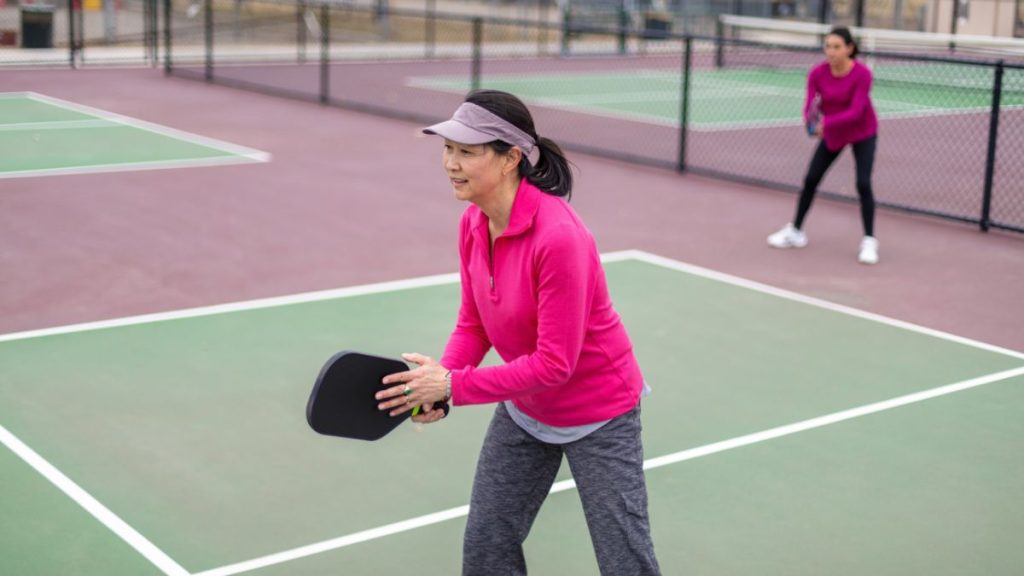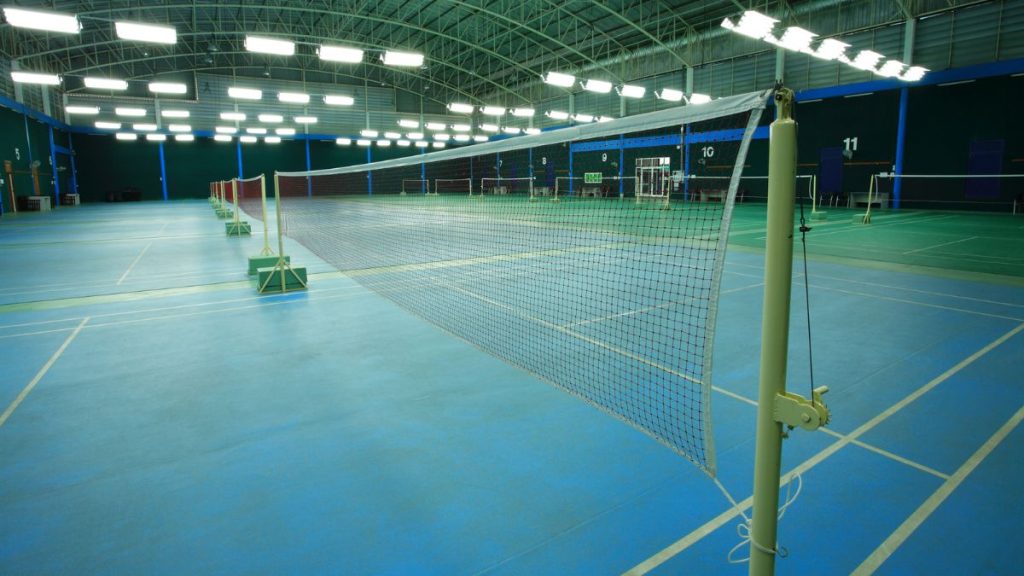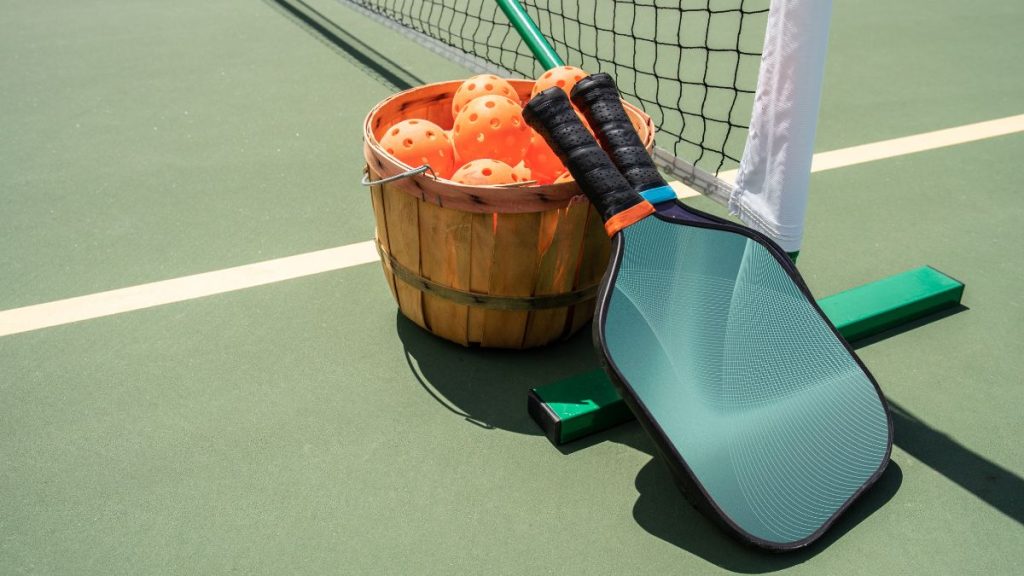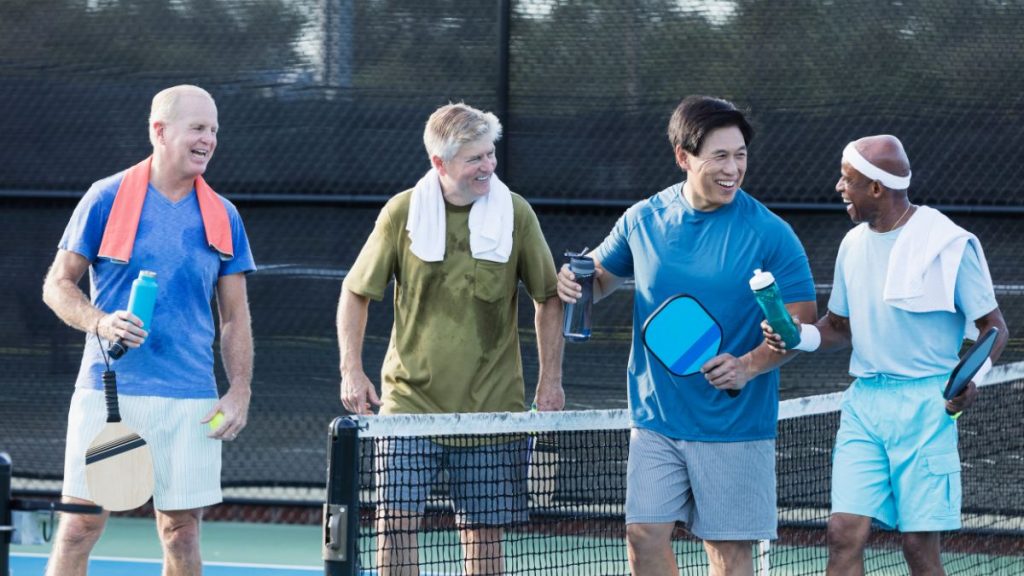If you’re into a sport that you can play indoors and outdoors, this fun game called pickleball is for you. It is a rising sport in the United States and is being played by many in locations with enough space.
Since pickleball is a combination of ping-pong, badminton, and tennis, the rules could be confusing. This is why many often ask, “can you change hands in pickleball?”
While the game is straightforward, some aspects could be difficult for first-time players, such as the ability to switch hands while playing.
You can change hands during a pickleball game, and players do before hitting a shot. Although sometimes it is recommended to change hands, there are occasions when it is best to avoid doing so.
Pickleball is an enjoyable game, provided that you have an understanding of the rules and methods. With that in mind, we asked a few avid pickleball players to reveal their knowledge about playing the game.
Is It Ok to Switch Hands in Pickleball
There is no direct rule against switching hands in pickleball. Players can change their dominant hand while playing, but there are certain conditions where you, as the player, need to remember if you want to switch grips. If there’s one thing a pickleball player should remember about switching hands when playing the game, this technique can involve risks for players regarding winning or losing points.
There are a few advantages and disadvantages to changing hands during a pickleball game:
Advantages
One great advantage of switching hands when playing pickleball is that it sets your ease or comfort. This means that when you feel uncomfortable or think your next shot wouldn’t make it through the court and will only give you a fault, switching hands can be your best technique in ensuring the rally continues, and you won’t risk losing any points.
Having the ability to switch hands while playing can also make your opponent confused, which you can use to your advantage. You can trick them by thinking you can’t receive the ball from their end when you can by switching hands.
Disadvantages
Switching hands in pickleball may ask you to spend more time, leading you to keep short when returning the ball to your opponent’s courtside, resulting in a fault. Switching can also be an advantage to your opposing team because they may see it coming based on your movements, giving them the advantage to formulate a technique against your game plan.
So… should you switch hands in pickleball or not?
Switching hands in pickleball is only applicable and advisable if circumstances require it. Michael Stevens of Paddle 2 Racket also recommends that the pickleball newbies have or develop a solid backhand first. Stick with one hand first, then practice playing the sport with two hands before entering a tournament.
Another situation where you can consider switching hands during a game is when you need more reach to return the ball to the other side of the court. This can give you a higher chance of continuing the rally and not losing a point.
Switching hands is still worth trying while playing the game, but it may require a player more time to master this and put it to his or her advantage.
Are You Allowed to Use Both Hands in Pickleball
As mentioned earlier, you can switch your pickleball paddle between your hands at any point in the game. Using both hands to hold your paddle is also acceptable when playing. This means that players may use their right hand, left hand, or both hands on a pickleball court to make a shot.
Do You Switch Grips in Pickleball
Your pickleball grip, or how you hold your pickleball paddle, has a crucial role in how well you play the game. Your pickleball grip will impact how you play and the type of shots you make. This is why utilizing a pickleball grip that enhances your preferred shots on the pickleball court and matches your playing style is crucial.
Generally speaking, the sport of pickleball doesn’t give enough time to change your paddle grip between shots. This is a major distinction between pickleball and tennis. Unlike pickleball, tennis players have a longer time to alter their grips on their racquets. In pickleball, because so much takes place at the non-volley zone (or kitchen) line, it can take a fraction of a second between shots which is not enough time to change your pickleball grip.
Switching grips at the net in a fast exchange is not recommended since more experienced players will be aware of this and recognize where you’re likely to hit the ball.
What Grip Does Most Pickleball Pros Use?
Now that you’ve learned about the concept of switching hands in pickleball let’s discover which grip most pickleball professionals use during their matches. Depending on a player’s needs, the use of grip may vary from time to time when it’s game time. You should also consider that the paddle used in pickleball differs greatly from tennis rackets because they’re smaller and lighter, making them easier to hold. If you’re a tennis player considering trying to play Pickleball, you may have to take note of this fact.
In Pickleball, players can use three grips: Eastern, Western, and Continental.
Eastern Grip
The Eastern grip is the most widely used paddle grip in pickleball. On pickleball courts, beginners and intermediate players should generally use the standard Eastern pickleball grip. This is so that you may strike both a forehand and a backhand shot with the same pickleball grip.
The basic Eastern pickleball grip is universal or neutral. To put it another way, the Eastern pickleball grip is the ideal middle ground between a forehand and backhand pickleball shot. This means that the Eastern grip for pickleball is the best combination of forehand and backhand shots. With this, players can have a better flow when receiving and returning the ball, keeping the rally together and getting a better chance to score points and even win the match.
To find the Eastern grip, place your paddle straight out towards you using your opposite hand so that the paddle’s face looks evenly to the left and right sides of your body. Take the hand holding the pickleball paddle and place it on the face of the paddle. Slide your hands down the paddle’s face and shake hands using the paddle grip.
It can also act as a universal Pickleball grip because of its ease of usage. Using this grip also feels like you’re shaking hands with your paddle.
Western Grip
The Western grip is not for everyone. This grip is performed starting with an Eastern Grip and then turning your grip to 90 degrees clockwise or counterclockwise, depending on your dominant hand. With this grip, your palm will be at the back of your paddle, making it difficult to switch from forehand to backhand since all the advantage of using this grip goes forward. Given this description, the Western Grip poses as an advanced kind of grip, which more professional players can utilize during a match.
In most cases, players with the Western grip for pickleball will hit an inverted forehand shot from the backhand side. If you are facing an opponent with a Western grip on the pickleball, you should try hitting their backhand side. Be aware that some players who use the Western pickleball grip use two hands for their backhands to help to compensate for the weak shot from their backhand.
Continental Grip
The Continental grip is also known as the “hammer grip.” This grip requires you to hold the paddle like a hammer while striking a nail. To find the Continental pickleball grip, start with the Eastern grip and rotate your wrist counterclockwise for righties and slightly counterclockwise for lefties to ensure that the V-shape formed between your thumb and index finger is slightly towards your non-paddle side.
A Continental pickleball grip happens to be in exact contrast to the Western grip for pickleball. The Continental grip makes nice hits and backhands; however, it is harder to hit forehands on the court since the Continental grip favors backhands.
This grip is for everyone, from beginners to professionals, and is highly recommended to be the first to master when playing the sport. When you know how to play tennis, this grip can be your go-to when playing Pickleball.
Conclusion
Deciding whether you should switch hands in pickleball is as simple as the sport – you have control if you will try it. The charm of the game lies in how it provides comfort to its players, from the venue (indoors or outdoors) and ease of game to options on techniques such as switching hands and types of grips. You can switch grips while playing Pickleball, but you also have to remember that it’s not advisable to do this often. You can also stick to playing with one hand and not switch.
Start enjoying pickleball more with these facts and develop your game style for this sport. Pick up your paddle, practice your grips, and start a match. See you at the Pickleball court!




